1. Paris
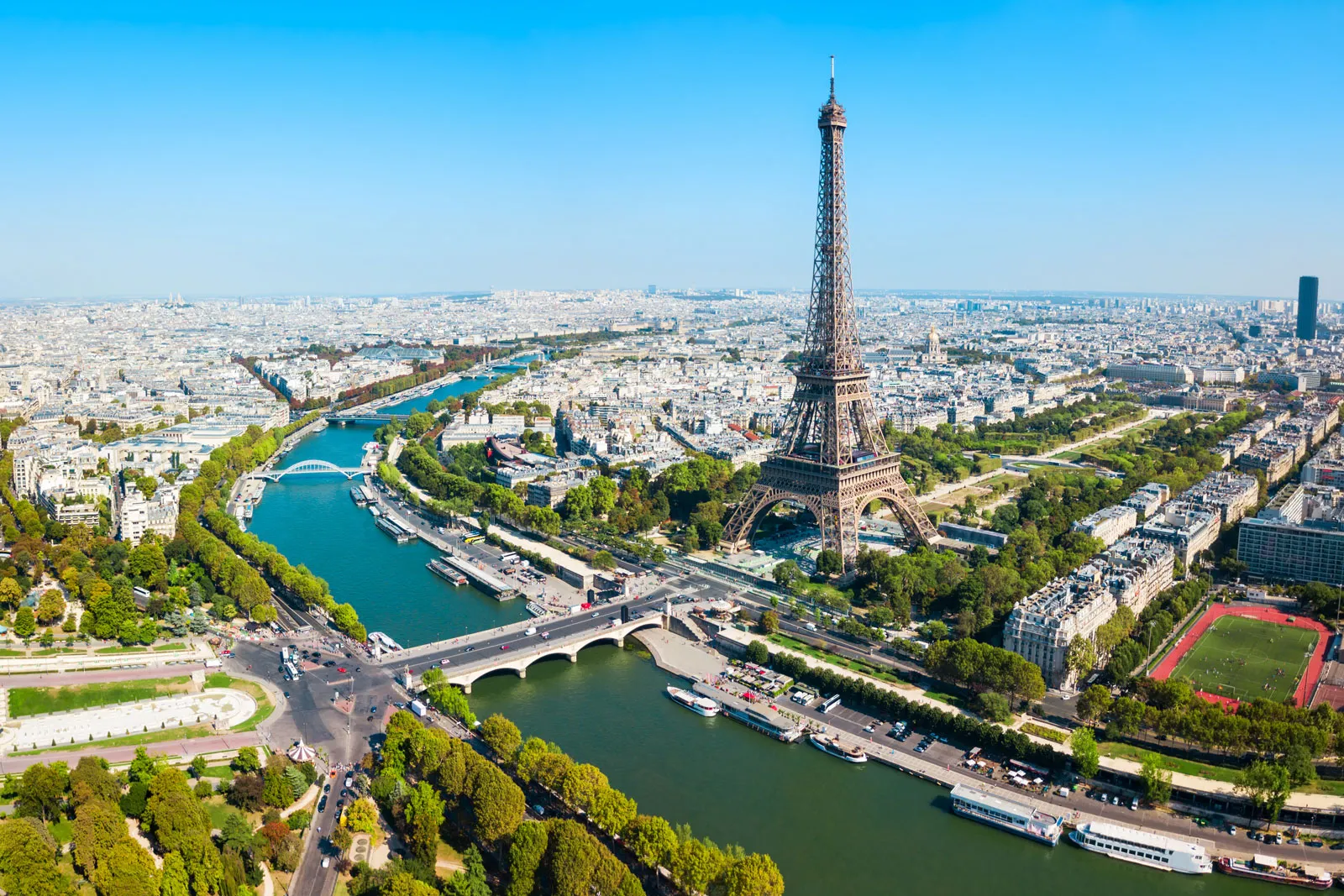
Paris, often referred to as “The City of Light,” is the crown jewel of France and a top travel destination worldwide. Known for its rich history, stunning architecture, world-class art, and vibrant culture, Paris offers an unforgettable experience for every visitor. Here’s why Paris stands as the number one city to visit in France, along with some must-see places that capture the essence of this iconic metropolis.
1. Iconic Landmarks
Paris is home to some of the world’s most famous landmarks. The Eiffel Tower, a symbol of French engineering and ingenuity, offers breathtaking views of the city from its various observation decks. The Notre-Dame Cathedral, with its gothic architecture and historical significance, continues to awe visitors despite the fire that damaged it in 2019. The Arc de Triomphe and Champs-Élysées are also must-visit sites, providing both historical context and modern-day luxury.
2. World-Class Museums and Art
Art and history enthusiasts will find Paris a treasure trove of masterpieces. The Louvre Museum, housing the Mona Lisa and countless other priceless works, is the largest art museum in the world. The Musée d’Orsay, set in a stunning former railway station, showcases an impressive collection of impressionist and post-impressionist art, including works by Monet, Van Gogh, and Degas. For modern art lovers, the Centre Pompidou offers a vast array of contemporary pieces and dynamic exhibitions.
3. Rich Cultural Experience
Paris is a city that lives and breathes culture. From its historic cafes and bistros to its lively street markets and bookshops along the Seine, the city offers a unique blend of traditional and modern French life. The Montmartre district, once home to artists like Picasso and Dali, retains its bohemian charm with cobblestone streets, quaint cafes, and the iconic Sacré-Cœur Basilica. Parisian culture is also alive in its numerous theaters, music venues, and annual festivals that celebrate everything from jazz to film.
4. Gastronomic Delights
Paris is synonymous with culinary excellence. The city boasts an array of dining experiences, from Michelin-starred restaurants to charming patisseries and bustling markets. French cuisine, known for its precision and creativity, is a highlight for any visitor. Indulge in a freshly baked croissant at a local bakery, savor gourmet dishes at renowned restaurants like Le Jules Verne or L’Ambroisie, and explore the vibrant food markets such as Marché des Enfants Rouges for fresh produce and artisanal products.
5. Romantic Atmosphere
Known as one of the most romantic cities in the world, Paris offers countless opportunities for couples to experience its magic. A stroll along the Seine River, a boat cruise with views of illuminated landmarks, or a picnic in the Luxembourg Gardens are just a few ways to enjoy the city’s romantic allure. The love locks tradition at Pont des Arts, although officially discouraged now, symbolizes the timeless romance that Paris inspires.
2. Nice
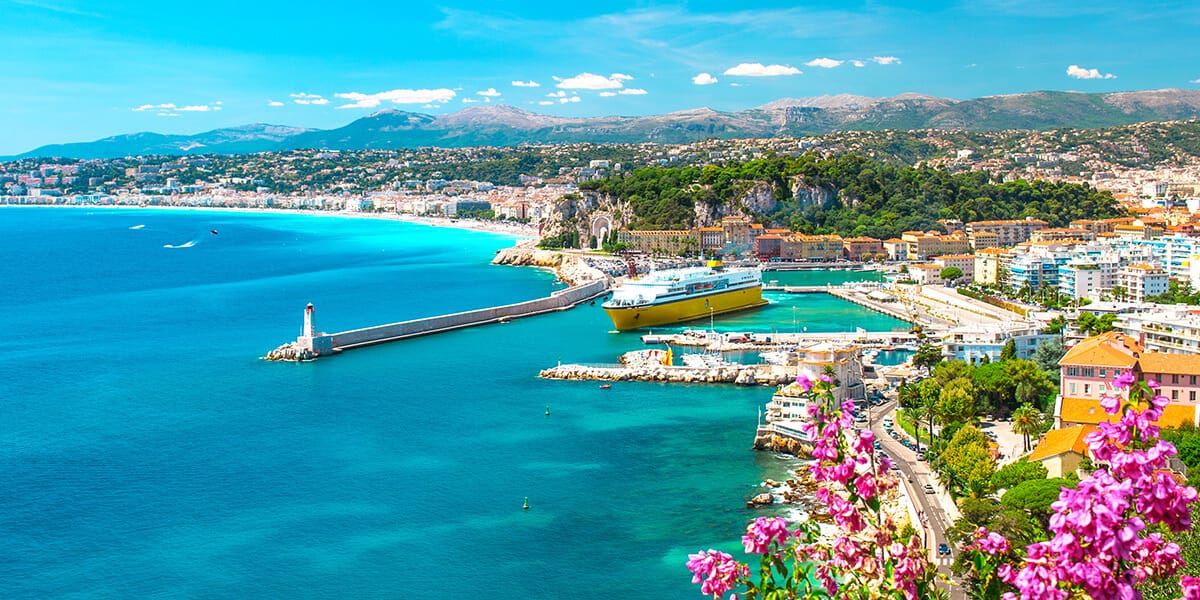

Nestled on the sun-drenched coast of the French Riviera, Nice stands as the second top city to visit in France, renowned for its stunning Mediterranean beauty, vibrant cultural scene, and historical charm. This glamorous seaside city attracts millions of visitors each year with its idyllic beaches, elegant architecture, and unique blend of French and Italian influences. Here’s why Nice is a must-visit destination and some of the key attractions that make it truly special.
1. Breathtaking Mediterranean Scenery
Nice boasts one of the most picturesque coastlines in Europe, with the azure waters of the Mediterranean Sea providing a stunning backdrop. The city’s famous Promenade des Anglais stretches along the seafront, offering breathtaking views, perfect for leisurely strolls, cycling, or simply enjoying the sunset. The pebble beaches of Nice invite sunbathers and swimmers, while the nearby rocky inlets and cliffs offer spectacular vistas and hidden coves to explore.
2. Rich Historical and Cultural Heritage
With a history dating back to the ancient Greeks, Nice is a city steeped in history. The Vieux Nice (Old Town), with its narrow winding streets, colorful facades, and bustling markets, transports visitors back in time. Key historical sites include the Cours Saleya Market, known for its fresh produce and vibrant flower market, and the Castle Hill (Colline du Château), offering panoramic views of the city and the sea, as well as ancient ruins and lush gardens.
3. Vibrant Arts and Museums
Nice is a cultural hub, home to numerous museums and art galleries that celebrate its rich artistic heritage. The Musée Matisse and the Musée Marc Chagall showcase works by these renowned artists who found inspiration in Nice’s light and landscapes. The Musée d’Art Moderne et d’Art Contemporain (MAMAC) offers a diverse collection of modern and contemporary art. Throughout the year, Nice hosts various cultural festivals and events, such as the Nice Jazz Festival and the Nice Carnival, which highlight the city’s lively arts scene.
4. Delicious Cuisine and Local Specialties
The cuisine in Nice is a delightful fusion of French and Italian influences, reflecting its geographical location and cultural history. The city’s culinary scene is celebrated for its use of fresh, local ingredients. Signature dishes include Salade Niçoise, a hearty salad made with tuna, eggs, and a variety of vegetables; Socca, a savory chickpea pancake; and Pissaladière, a type of onion tart. Exploring the local restaurants, bistros, and markets, such as the famous Marché aux Fleurs, is a treat for any food lover.
5. Luxurious and Cosmopolitan Atmosphere
Nice exudes an air of elegance and sophistication, attracting a cosmopolitan crowd. The city’s luxury hotels, high-end boutiques, and vibrant nightlife offer a taste of the glamorous Riviera lifestyle. Visitors can enjoy cocktails at chic beach clubs, shop along the fashionable Avenue Jean Médecin, or try their luck at the grand Casino Barrière. The blend of old-world charm and modern luxury makes Nice an appealing destination for travelers seeking both relaxation and excitement.
3. Lyon
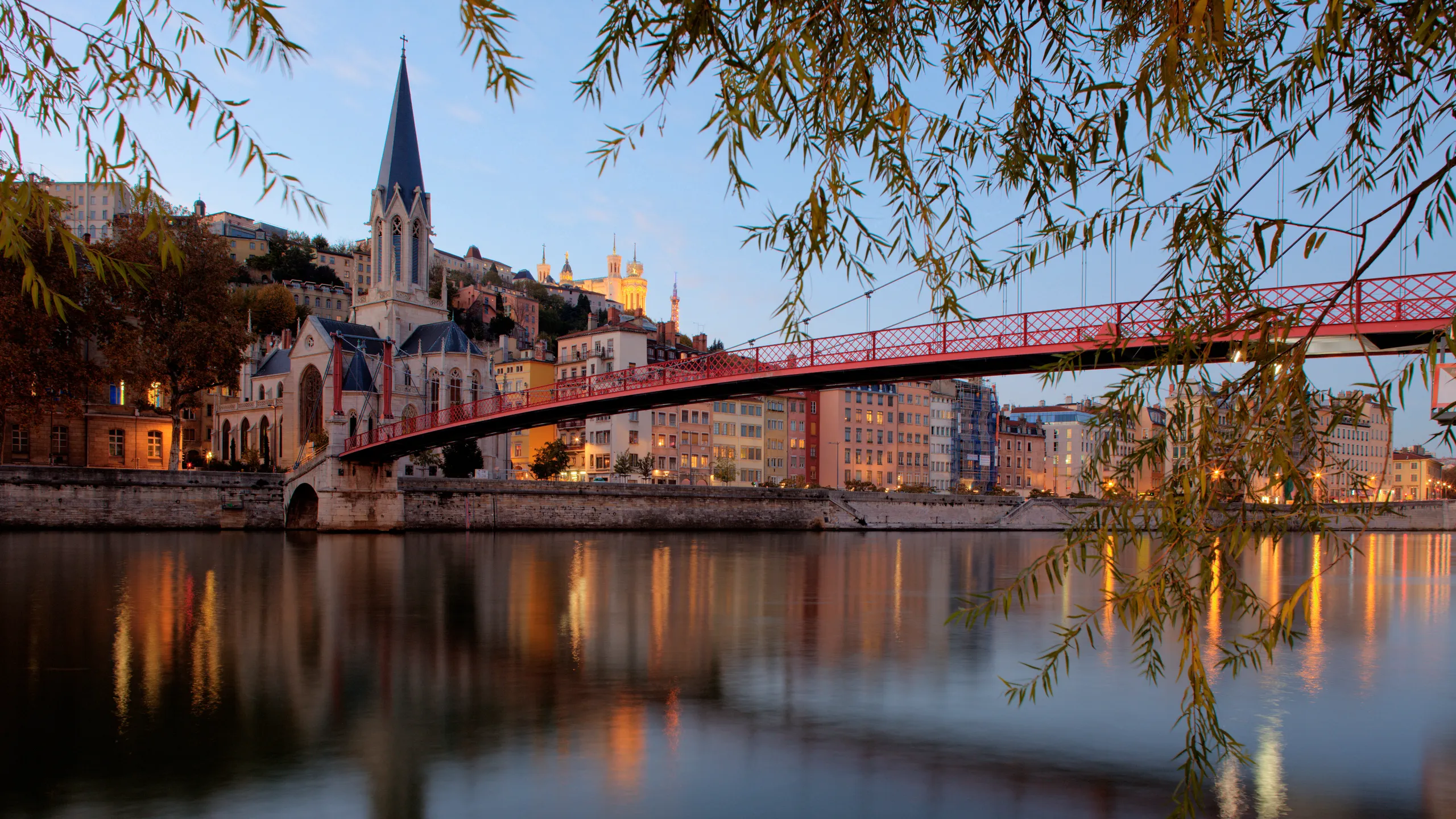

Nestled between Paris and the French Riviera, Lyon is France’s third largest city and a treasure trove of history, culture, and gastronomy. Often overshadowed by its more famous neighbors, Lyon is a destination that rewards visitors with its charm, vibrancy, and rich heritage. Here’s why Lyon is the top 3 city to visit in France and a few must-visit places that make it an essential stop on any French itinerary.
1. Culinary Capital of France
Lyon is celebrated as the gastronomic capital of France, a country renowned for its cuisine. The city’s culinary scene is rooted in a tradition of quality and innovation, with a focus on fresh, local ingredients. Lyon is home to the famous Bouchons Lyonnais, traditional restaurants that serve hearty local dishes such as Quenelles de Brochet (pike dumplings) and Andouillette (a type of sausage). The city’s markets, like the Halles de Lyon Paul Bocuse, named after the legendary chef, offer a paradise for food lovers with a vast array of cheeses, meats, pastries, and wines. Lyon also boasts numerous Michelin-starred restaurants, making it a mecca for gourmet dining.
2. Rich History and Heritage
Lyon’s history spans over two millennia, evident in its well-preserved architecture and historical sites. The city’s old town, Vieux Lyon, is a UNESCO World Heritage site, with Renaissance buildings, narrow cobblestone streets, and hidden passageways known as traboules. These secret passageways, originally used by silk weavers to transport goods, are now a fascinating feature for visitors to explore. The Basilica of Notre-Dame de Fourvière, perched atop Fourvière Hill, offers panoramic views of the city and is a testament to Lyon’s rich religious and architectural heritage.
3. Cultural Hub
Lyon is a city that embraces art and culture in all its forms. The Musée des Beaux-Arts de Lyon, housed in a former Benedictine convent, is one of the largest art museums in France, with an extensive collection ranging from ancient Egyptian artifacts to modern art. The Institut Lumière celebrates the birthplace of cinema, honoring the Lumière brothers who pioneered film technology in Lyon. Throughout the year, the city hosts various cultural festivals, such as the Fête des Lumières (Festival of Lights) in December, which illuminates the city with spectacular light installations and attracts visitors from around the world.
4. Dynamic and Diverse Neighborhoods
Lyon is a city of neighborhoods, each with its unique character and charm. The Presqu’île, a peninsula between the Rhône and Saône rivers, is the heart of the city, bustling with shops, cafes, and beautiful squares like Place des Terreaux and Place Bellecour. The Croix-Rousse district, once the center of Lyon’s silk industry, offers a bohemian vibe with its artisan workshops, trendy boutiques, and vibrant street art. The Confluence area, a modern development at the confluence of the two rivers, showcases innovative architecture, a futuristic shopping center, and the cutting-edge Musée des Confluences.
5. Scenic Beauty and Outdoor Activities
Lyon’s scenic beauty extends beyond its urban landscape. The city’s two rivers, the Rhône and the Saône, provide picturesque settings for leisurely walks, boat tours, and outdoor activities. The Parc de la Tête d’Or, one of the largest urban parks in France, offers a green oasis with a zoo, botanical garden, and serene lake. The nearby Beaujolais and Côtes du Rhône wine regions invite wine enthusiasts to explore vineyards and sample exquisite wines. The surrounding countryside, with its rolling hills and charming villages, offers ample opportunities for hiking, cycling, and day trips.
4. Marseille
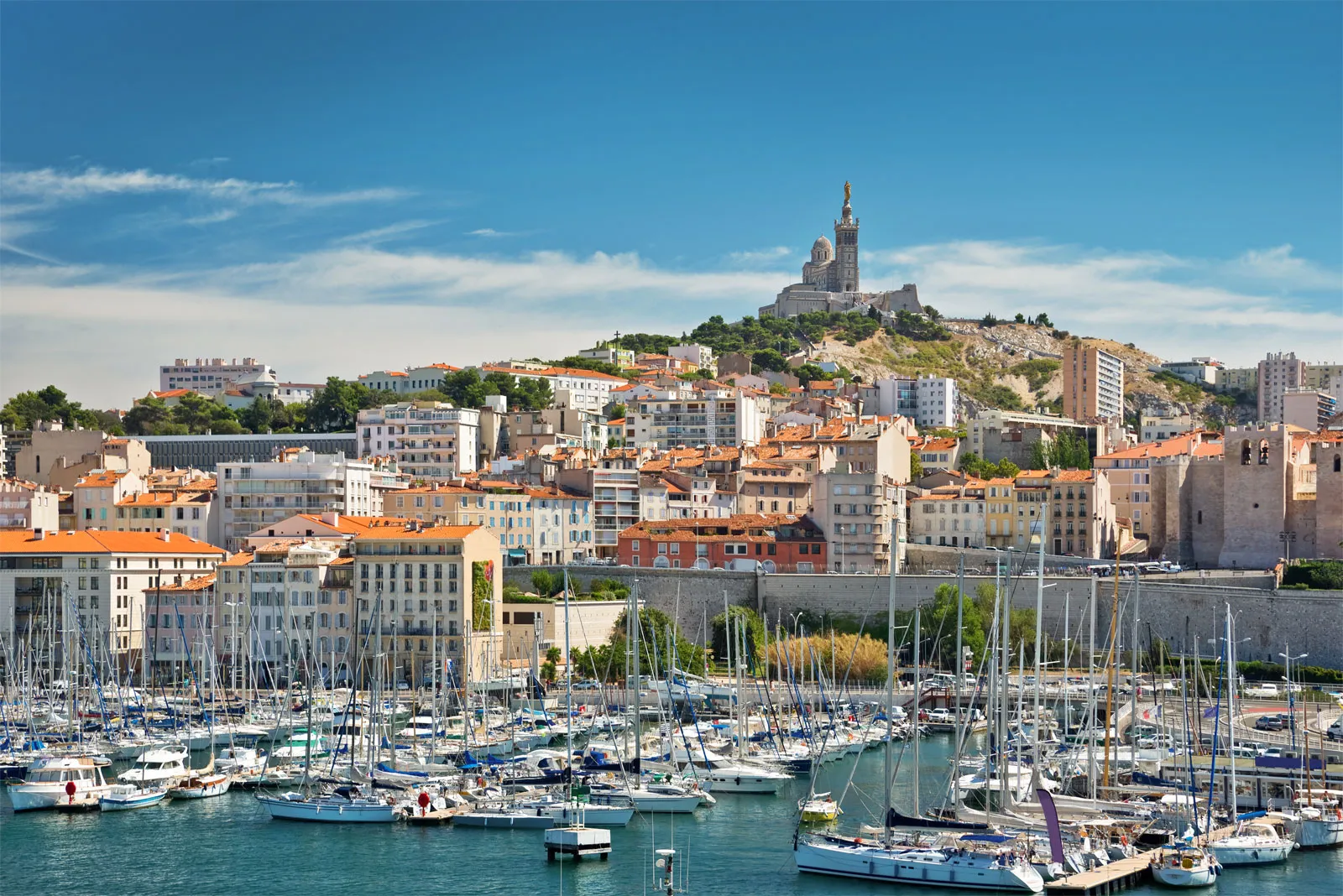

Marseille, France’s oldest city and the second largest after Paris, is a vibrant and dynamic destination that beautifully blends history, culture, and natural beauty. Nestled on the Mediterranean coast, this bustling port city offers a unique charm and a variety of attractions that make it a must-visit destination. Here’s why Marseille is the top 4 city to visit in France, along with some must-see places that capture the essence of this intriguing city.
1. Rich Historical Significance
Founded by Greek sailors in 600 BC, Marseille boasts over 2,600 years of history. This ancient city is a tapestry of different cultures and influences, reflected in its architecture, cuisine, and traditions. The Old Port (Vieux-Port) is the heart of Marseille, where fishing boats and yachts bob alongside each other, and history resonates in every corner. Nearby, the Museum of European and Mediterranean Civilisations (MuCEM) offers a fascinating journey through the history and cultures of the Mediterranean region. The Le Panier district, the oldest part of Marseille, charms visitors with its narrow streets, colorful buildings, and historical landmarks like the Vieille Charité, a stunning 17th-century almshouse.
2. Stunning Coastal Scenery
Marseille’s location on the Mediterranean coast means it boasts breathtaking coastal scenery and numerous opportunities for outdoor activities. The Calanques National Park, stretching between Marseille and Cassis, is a natural wonder with dramatic limestone cliffs, turquoise waters, and hidden coves. It’s perfect for hiking, swimming, and kayaking. Plage des Catalans and Plage du Prophète are popular beaches within the city, offering a slice of sun and sea just a short distance from the urban center. For panoramic views of the city and the sea, the climb up to Basilique Notre-Dame de la Garde, an iconic hilltop basilica, is well worth the effort.
3. Cultural Diversity and Vibrancy
Marseille is known for its vibrant and diverse cultural scene. The city’s multi-ethnic population contributes to a lively atmosphere and a rich cultural tapestry. The Noailles district, often referred to as the “belly of Marseille,” is a bustling area with a variety of markets and shops offering goods from around the world. The city’s festivals, such as the Festival de Marseille and Fiesta des Suds, celebrate music, dance, and the arts, attracting performers and visitors from all corners of the globe. Marseille’s diverse culture is also reflected in its cuisine, with a plethora of restaurants serving dishes that range from traditional Provençal fare to North African and Middle Eastern specialties.
4. Exquisite Cuisine
Marseille’s culinary scene is a delightful reflection of its Mediterranean location and cultural diversity. The city is famed for its seafood, with the iconic bouillabaisse being a must-try dish. This traditional fish stew, made with a variety of local fish and shellfish, is a culinary experience not to be missed. The bustling markets, such as the Marché des Capucins, offer fresh produce, spices, and local delicacies. For a more refined dining experience, Marseille boasts several Michelin-starred restaurants, where chefs creatively blend traditional and modern culinary techniques. The city’s cafes and bistros, often with views of the port or the sea, provide the perfect spots to relax and savor the flavors of the Mediterranean.
5. Architectural Marvels
Marseille is a city of striking architectural contrasts, with a blend of ancient structures and modern masterpieces. The Cathédrale de la Major, a stunning neo-Byzantine cathedral, stands proudly near the port, while the sleek lines of the Villa Méditerranée and the Cité Radieuse, designed by Le Corbusier, showcase modernist architecture. The Palais Longchamp, with its grand fountains and gardens, is a 19th-century architectural gem that houses the city’s natural history and fine arts museums. Wandering through Marseille’s streets, visitors can admire a mix of architectural styles that tell the story of the city’s evolving identity.
5. Bordeaux
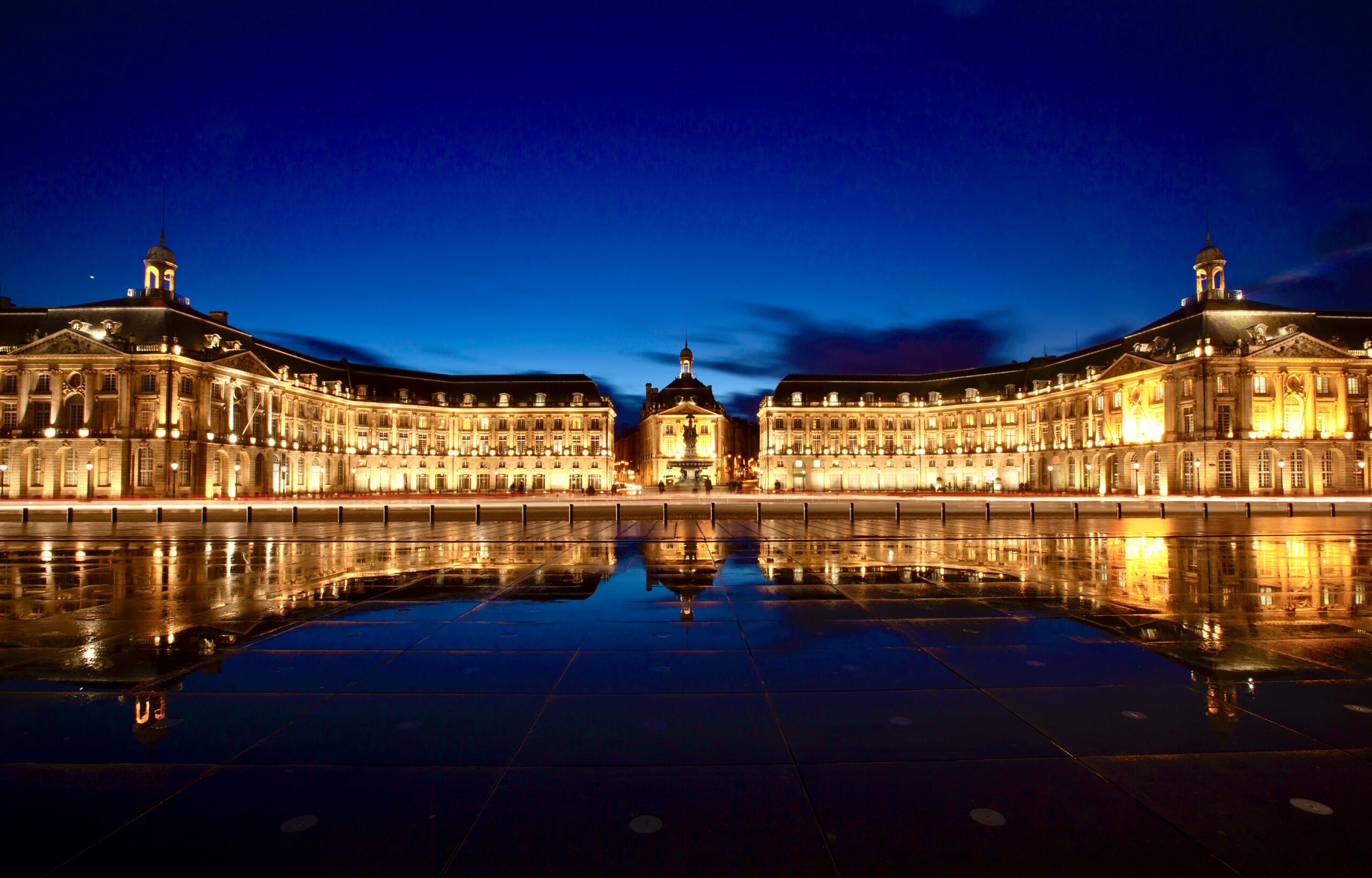

Bordeaux, often referred to as the “Pearl of Aquitaine,” is a city that seamlessly blends its historic charm with modern vibrancy. Known for its world-renowned wine, stunning architecture, and lively cultural scene, Bordeaux stands as the fifth top city to visit in France. Here’s why Bordeaux is a must-visit destination, along with some key attractions that make this city truly special.
1. World-Famous Wine
Bordeaux is synonymous with exceptional wine. As one of the most famous wine regions in the world, Bordeaux offers wine enthusiasts a chance to explore its celebrated vineyards and wineries. The Bordeaux Wine Route leads visitors through picturesque landscapes dotted with chateaux, where they can sample exquisite wines such as Médoc, Saint-Émilion, and Sauternes. The Cité du Vin, a unique cultural facility dedicated to the world of wine, offers interactive exhibits, tastings, and panoramic views of the city. Whether you’re a connoisseur or a casual wine lover, Bordeaux provides an unforgettable wine experience.
2. Architectural Beauty
Bordeaux boasts some of the most stunning architecture in France. The city’s historic center, a UNESCO World Heritage site, is a treasure trove of classical and neoclassical buildings. The Place de la Bourse, with its grand facades and the reflective Miroir d’Eau, is an iconic symbol of Bordeaux’s elegance. The Bordeaux Cathedral (Saint-André), a magnificent Gothic structure, stands as a testament to the city’s rich history. Walking through the Quinconces Square and along the Garonne River, visitors can admire the harmonious blend of historic and contemporary architecture that defines Bordeaux.
3. Cultural Richness
Bordeaux is a cultural hub, offering a vibrant arts scene and numerous cultural attractions. The Musée des Beaux-Arts de Bordeaux houses an impressive collection of European art, including works by Rubens, Delacroix, and Matisse. The Grand Théâtre de Bordeaux, an architectural masterpiece, hosts opera, ballet, and theater performances in a stunning setting. The city’s many festivals, such as the Bordeaux Wine Festival and Climax Festival, celebrate everything from wine and food to music and environmental awareness. Bordeaux’s lively cultural scene ensures that there’s always something exciting happening in the city.
4. Gastronomic Delights
Bordeaux’s culinary scene is as renowned as its wine. The city offers a delectable array of dining experiences, from Michelin-starred restaurants to charming bistros. Bordeaux’s cuisine is rooted in the rich culinary traditions of the Southwest of France, featuring dishes like magret de canard (duck breast), foie gras, and canelés, a local pastry. The Marché des Capucins, the city’s main market, is a food lover’s paradise, offering fresh produce, cheeses, charcuterie, and more. Dining in Bordeaux is a journey through the flavors of the region, perfectly complemented by the city’s exquisite wines.
5. Vibrant Riverfront and Outdoor Spaces
Bordeaux’s location along the Garonne River provides a stunning backdrop for outdoor activities and leisure. The Quais de Bordeaux offers a scenic promenade for walking, cycling, or simply relaxing by the water. The recently revitalized riverfront is lined with cafes, parks, and cultural venues, creating a vibrant and inviting atmosphere. The Jardin Public, a beautifully landscaped park in the heart of the city, is perfect for picnics, leisurely strolls, and family outings. For those looking to explore beyond the city, the nearby Dune du Pilat, Europe’s tallest sand dune, and the stunning Arcachon Bay offer spectacular natural beauty and adventure.
6. Toulouse
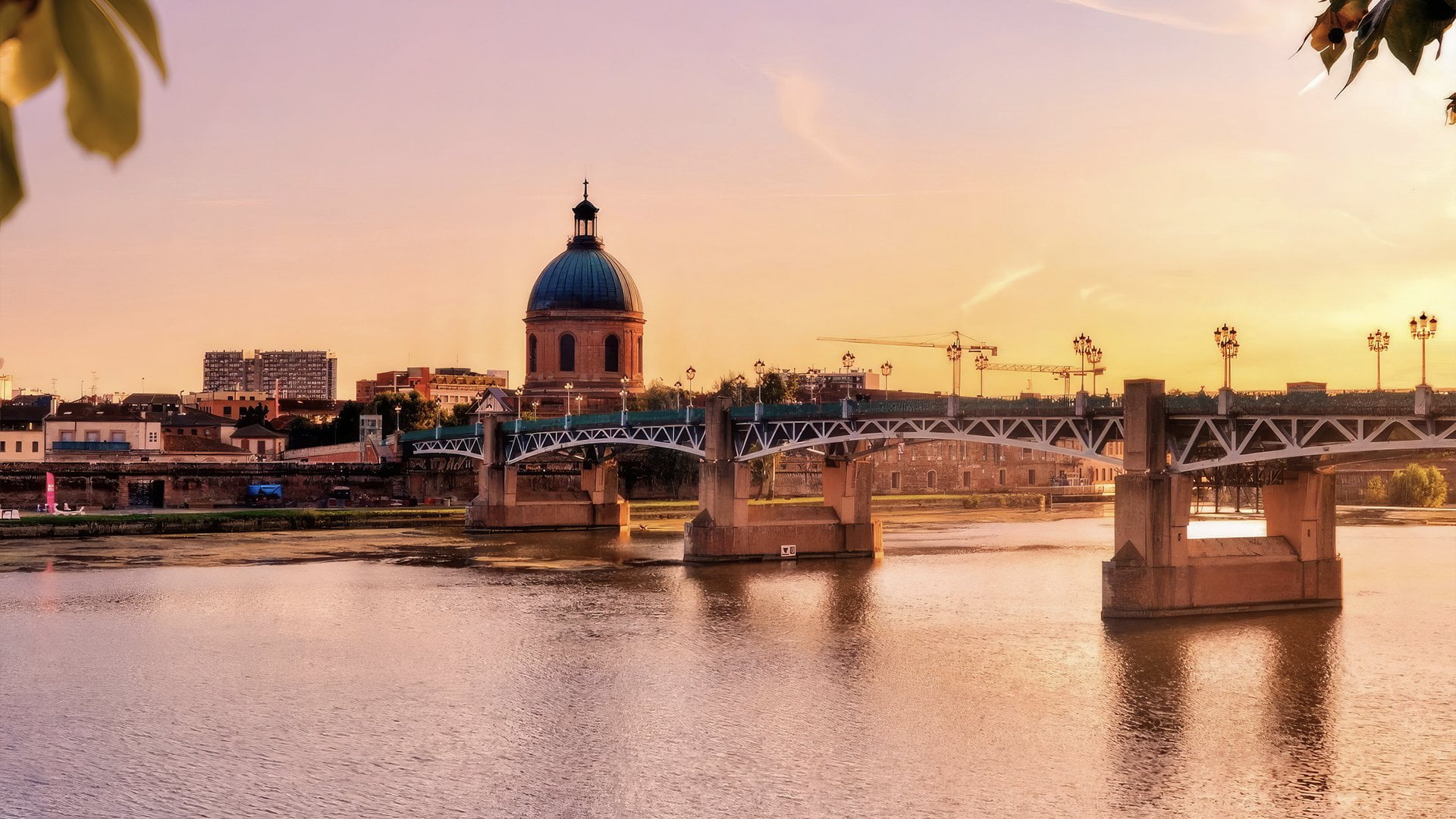

Toulouse, known as “La Ville Rose” or “The Pink City” for its distinctive terracotta brick buildings, is a vibrant and dynamic destination that offers a unique blend of history, culture, and modernity. Nestled in the heart of southwestern France, Toulouse is an essential stop for anyone exploring the richness of the French landscape. Here’s why Toulouse is the top 6 city to visit in France, along with some must-see places that capture the essence of this charming city.
1. Architectural Beauty and Historical Significance
Toulouse’s rich history is reflected in its stunning architecture, which spans from Roman times to the Renaissance and beyond. The city’s historic center is a maze of narrow, winding streets that open onto beautiful squares. The Capitole de Toulouse, the city hall, is a magnificent building with a grand neoclassical facade and an opulent interior. The Basilique Saint-Sernin, a UNESCO World Heritage site, is one of the largest Romanesque churches in Europe and a significant stop on the Camino de Santiago pilgrimage route. The Couvent des Jacobins, with its soaring columns and peaceful cloister, offers a serene escape in the heart of the city.
2. Aerospace Hub
Toulouse is the center of the European aerospace industry, home to the headquarters of Airbus and numerous research and educational institutions. The Cité de l’Espace is a must-visit for science enthusiasts, offering interactive exhibits, a planetarium, and life-size replicas of spacecraft. Visitors can explore the history and future of space exploration, making it a unique attraction that sets Toulouse apart from other French cities. The Aeroscopia Museum further enhances this experience with an impressive collection of aircraft and aviation exhibits.
3. Cultural Richness and Vibrancy
Toulouse boasts a vibrant cultural scene with a plethora of museums, theaters, and galleries. The Musée des Augustins, housed in a former Augustinian convent, features an extensive collection of fine art, including works by Delacroix and Rodin. The Théâtre du Capitole is renowned for its opera and ballet performances, while the Halle aux Grains hosts symphony orchestras and contemporary music concerts. The city’s many festivals, such as the Piano aux Jacobins and Festival Rio Loco, celebrate music, art, and multiculturalism, ensuring there’s always something exciting happening in Toulouse.
4. Gastronomic Delights
Toulouse is a paradise for food lovers, with a rich culinary heritage that showcases the flavors of southwestern France. The city is famous for its cassoulet, a hearty dish made with white beans, sausage, and duck confit. The bustling Marché Victor Hugo is a foodie’s haven, offering fresh produce, local cheeses, charcuterie, and more. Toulouse is also known for its vibrant cafe culture and wine bars, where visitors can savor regional wines from nearby vineyards in the Languedoc and Gaillac regions. Dining in Toulouse is a delightful journey through the region’s rich gastronomic traditions.
5. Scenic Beauty and Outdoor Activities
Toulouse’s location along the Garonne River and the Canal du Midi, another UNESCO World Heritage site, provides stunning natural beauty and ample opportunities for outdoor activities. The Jardin Japonais offers a tranquil retreat with its serene landscapes and traditional Japanese design. The Prairie des Filtres, a riverside park, is perfect for picnics, leisurely walks, and outdoor events. Cycling along the Canal du Midi or taking a boat cruise on the Garonne River are popular ways to enjoy the city’s scenic beauty and explore its surroundings.
7. Strasbourg
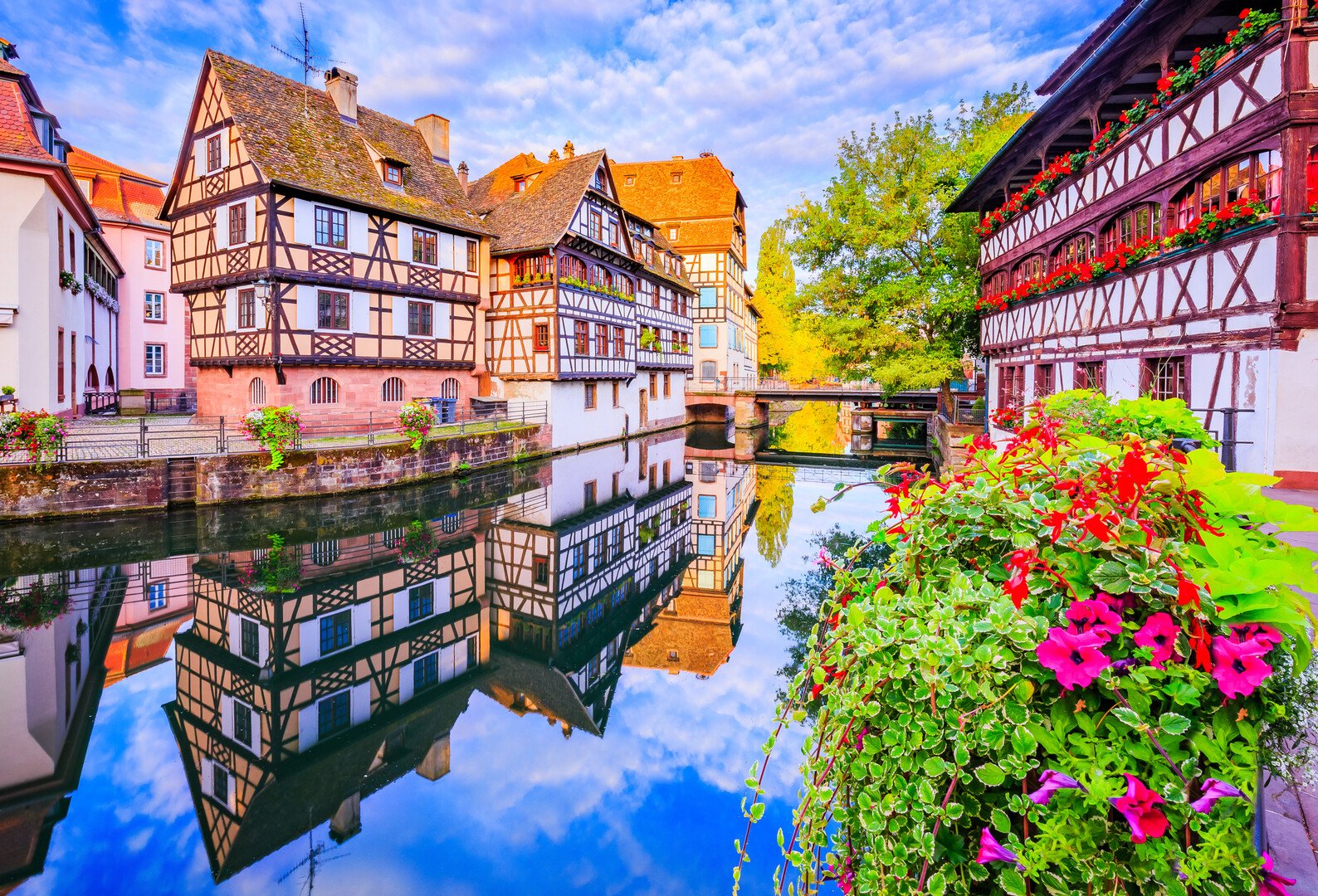

Strasbourg’s architecture is a fascinating mix of medieval, Renaissance, and modern styles. The Strasbourg Cathedral (Cathédrale Notre-Dame), a stunning example of Gothic architecture, is the city’s most iconic landmark. Its intricate facade, soaring spire, and exquisite stained-glass windows make it a must-visit. The cathedral’s astronomical clock, a marvel of engineering, is another highlight. The Petite France district, with its charming half-timbered houses, cobblestone streets, and picturesque canals, offers a fairy-tale ambiance that transports visitors back in time. Walking through Strasbourg’s historic center, a UNESCO World Heritage site, reveals a city steeped in architectural beauty and history.
2. European Capital
Strasbourg is known as the “Capital of Europe” due to its role as the seat of several key European institutions. The European Parliament, the Council of Europe, and the European Court of Human Rights are all based in the city. Visitors can tour the European Parliament and learn about the workings of the EU, gaining insight into the legislative processes that shape Europe. Strasbourg’s status as a hub of European governance underscores its importance on the continental stage and adds a layer of political and historical significance to any visit.
3. Cultural Richness
Strasbourg boasts a vibrant cultural scene with numerous museums, theaters, and galleries. The Musée de l’Œuvre Notre-Dame houses an impressive collection of medieval and Renaissance art, while the Musée d’Art Moderne et Contemporain showcases modern and contemporary works. The Opéra National du Rhin and the Théâtre National de Strasbourg offer world-class performances in opera, ballet, and theater. The city’s cultural calendar is filled with festivals and events, such as the Strasbourg Christmas Market, one of the oldest and largest in Europe, and the Strasbourg Music Festival, which celebrates classical music in stunning venues.
4. Gastronomic Delights
Strasbourg’s culinary scene is a delightful reflection of its Franco-German heritage. The city is renowned for its hearty Alsatian cuisine, which includes specialties like choucroute garnie (sauerkraut with sausages and meats), flammekueche (a thin-crust pizza-like dish), and bretzels (pretzels). The local wines, particularly Riesling and Gewürztraminer, are perfect accompaniments to the rich flavors of Alsatian dishes. Strasbourg’s numerous winstubs (traditional Alsatian taverns) offer an authentic dining experience, while its bustling markets, such as the Marché de Noël, provide a chance to sample local produce and delicacies. For a gourmet treat, visitors can enjoy a meal at one of the city’s Michelin-starred restaurants.
5. Scenic Beauty and Outdoor Activities
Strasbourg’s scenic beauty is enhanced by its numerous parks, gardens, and waterways. The Parc de l’Orangerie, the city’s oldest park, is perfect for leisurely strolls, picnics, and boat rides on its lake. The Botanical Gardens offer a serene escape with a diverse collection of plants and greenhouses. The Ill River winds through Strasbourg, providing picturesque views and opportunities for boat tours and kayaking. The city’s extensive network of cycle paths makes it easy to explore by bike, with routes leading to the nearby Rhine River and the charming villages of the Alsace Wine Route.
8. Lille
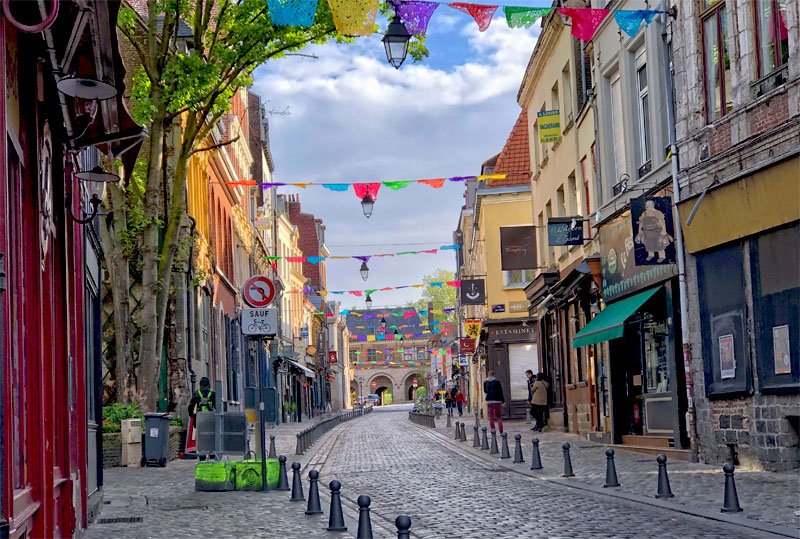

Lille, the vibrant capital of the Hauts-de-France region, is a hidden gem in northern France that offers a perfect blend of history, culture, and modernity. Often overshadowed by its more famous counterparts, Lille boasts a rich heritage, dynamic arts scene, and a welcoming atmosphere that makes it a top destination for travelers. Here’s why Lille is the top 8 city to visit in France, along with some must-see places that capture the essence of this charming city.
1. Architectural Beauty and Historical Significance
Lille’s historic center, known as Vieux Lille, is a testament to its illustrious past. Walking through its cobblestone streets, you’ll encounter beautifully preserved Flemish Baroque buildings, colorful facades, and grand squares. The Grand Place, the heart of the city, is surrounded by stunning architecture, including the Vieille Bourse, a 17th-century stock exchange with an inner courtyard that hosts book markets and chess games. The Notre-Dame de la Treille Cathedral, with its striking modern facade juxtaposed against a Gothic interior, reflects Lille’s ability to blend the old with the new. The Palais des Beaux-Arts, one of the largest fine arts museums in France, houses an impressive collection of European masterpieces.
2. Cultural Richness
Lille is a cultural hub with a vibrant arts scene. The city is home to numerous museums, galleries, and theaters. The La Piscine Museum in nearby Roubaix, housed in a stunning Art Deco swimming pool, showcases an eclectic mix of art and design. The Lille Opera House and Théâtre du Nord offer a range of performances, from classical opera to contemporary theater. Lille’s status as the European Capital of Culture in 2004 has left a lasting legacy, with a calendar full of festivals, exhibitions, and events that celebrate the arts and cultural diversity. The Lille3000 cultural program continues this tradition, transforming the city with thematic festivals and art installations.
3. Gastronomic Delights
Lille’s culinary scene is a delightful fusion of French and Flemish influences. The city is renowned for its hearty and flavorful cuisine. Traditional dishes like carbonnade flamande (a beef stew cooked in beer), moules-frites (mussels with fries), and potjevleesch (a terrine of cold meats in jelly) reflect the region’s gastronomic heritage. The Marché de Wazemmes is one of the largest markets in France, offering fresh produce, local cheeses, pastries, and a vibrant atmosphere. Lille is also famous for its gaufres (waffles), particularly those from Meert, a historic patisserie that has been serving delicious treats since 1761. Craft beer lovers will appreciate the city’s numerous bars and breweries, showcasing a variety of local brews.
4. Festivals and Events
Lille’s lively spirit is showcased through its numerous festivals and events. The Braderie de Lille, held annually in September, is Europe’s largest flea market, attracting millions of visitors who come to browse and buy antiques, vintage items, and curiosities. The streets are filled with vendors, food stalls, and the aroma of moules-frites. The Lille Christmas Market transforms the city into a winter wonderland, with festive lights, artisanal gifts, and seasonal treats. Throughout the year, Lille hosts a variety of music, art, and cultural festivals, ensuring there’s always something exciting happening in the city.
5. Accessibility and Location
Lille’s strategic location makes it an ideal base for exploring northern France and beyond. The city is well-connected by high-speed trains, with Paris just an hour away and Brussels and London reachable in 90 minutes. Lille’s Gare Lille Europe and Gare Lille Flandres stations offer easy access to other major European cities, making it a convenient destination for travelers. The city’s compact size and excellent public transport system make it easy to explore, whether you’re strolling through the historic center or venturing to the surrounding countryside.
9. Cannes
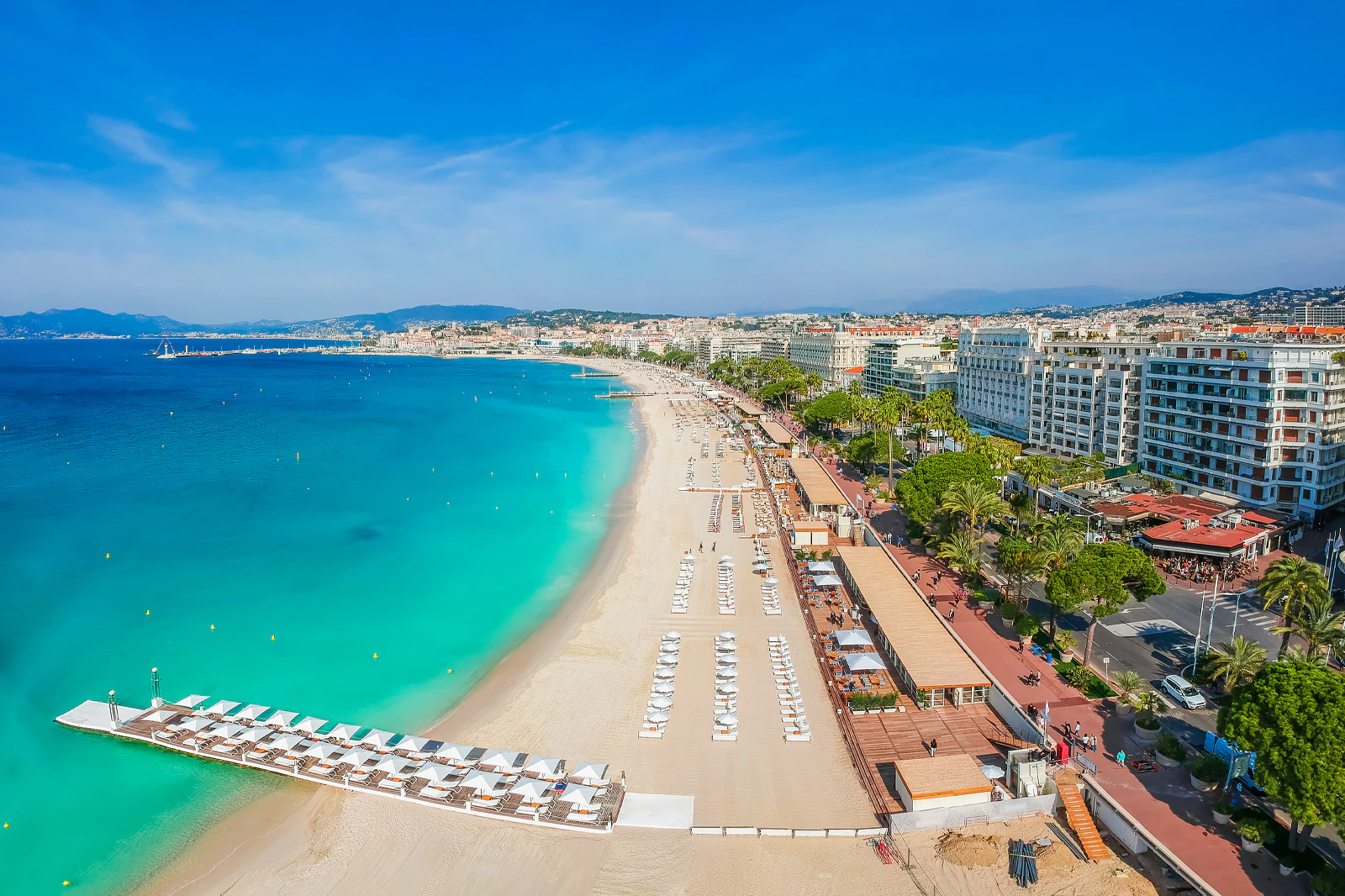

Cannes, nestled on the French Riviera, is renowned worldwide for its glamorous film festival and luxurious lifestyle. Beyond its celebrity allure, Cannes offers visitors a blend of natural beauty, cultural richness, and Mediterranean charm. Here’s why Cannes is a must-visit city in France, along with some compelling reasons to explore this iconic destination.
1. Glamorous Film Festival and Cultural Scene
Cannes is synonymous with the prestigious Cannes Film Festival, held annually at the Palais des Festivals et des Congrès. This world-renowned event attracts celebrities, filmmakers, and cinephiles from around the globe, putting Cannes in the spotlight as a hub of cinematic excellence and glamour. Beyond the festival, Cannes boasts a vibrant cultural scene with theaters, art galleries, and museums like the Musée de la Castre, housed in a historic castle offering panoramic views of the city and coastline. The Centre d’art La Malmaison showcases contemporary art exhibitions, adding to Cannes’ cultural richness.
2. Scenic Beauty and Mediterranean Lifestyle
Cannes enjoys a stunning setting along the French Riviera, with picturesque beaches and azure waters that invite relaxation and leisure. The Promenade de la Croisette, lined with palm trees and luxury boutiques, is perfect for a leisurely stroll or people-watching. Visitors can unwind on the sandy beaches like Plage de la Croisette or Plage Macé, where they can soak up the Mediterranean sun and enjoy panoramic views of the Lerins Islands. The coastal paths and parks, such as the Parc de la Croix des Gardes, offer breathtaking vistas of the city and sea, making Cannes a paradise for nature lovers.
3. Historic Charm and Architectural Heritage
Cannes boasts a blend of Belle Époque architecture, Art Deco facades, and Mediterranean villas that reflect its rich history and aristocratic past. The Vieux Port (Old Port) is a charming area where traditional fishing boats mingle with luxurious yachts, creating a picturesque maritime ambiance. The Suquet, Cannes’ old town, is perched on a hill overlooking the port and features narrow streets, colorful houses, and the 11th-century Tour du Suquet, offering panoramic views of the city and bay. Exploring these historic quarters allows visitors to delve into Cannes’ fascinating heritage and architectural diversity.
4. Shopping and Gastronomy
Cannes is a paradise for shopping enthusiasts, offering haute couture boutiques, designer shops, and upscale markets. The Rue d’Antibes, lined with luxury brands and chic cafes, is ideal for indulging in retail therapy and sampling French delicacies. Food lovers can savor Mediterranean cuisine at Michelin-starred restaurants, waterfront bistros, and cozy brasseries offering fresh seafood, Provençal specialties, and local wines. The Marché Forville, a bustling market, is a foodie’s haven where visitors can taste regional produce, cheeses, and artisanal delights, enhancing the culinary experience in Cannes.
5. Cultural Festivals and Events
Beyond the Cannes Film Festival, the city hosts a variety of cultural events throughout the year. The Cannes Lions International Festival of Creativity celebrates innovation in advertising and communication, drawing industry professionals from around the world. The Festival d’Art Pyrotechnique, a fireworks competition, illuminates the Cannes sky with dazzling displays during the summer months. These events showcase Cannes’ dynamic spirit and commitment to celebrating creativity, culture, and entertainment on a global stage.
10. Montpellier
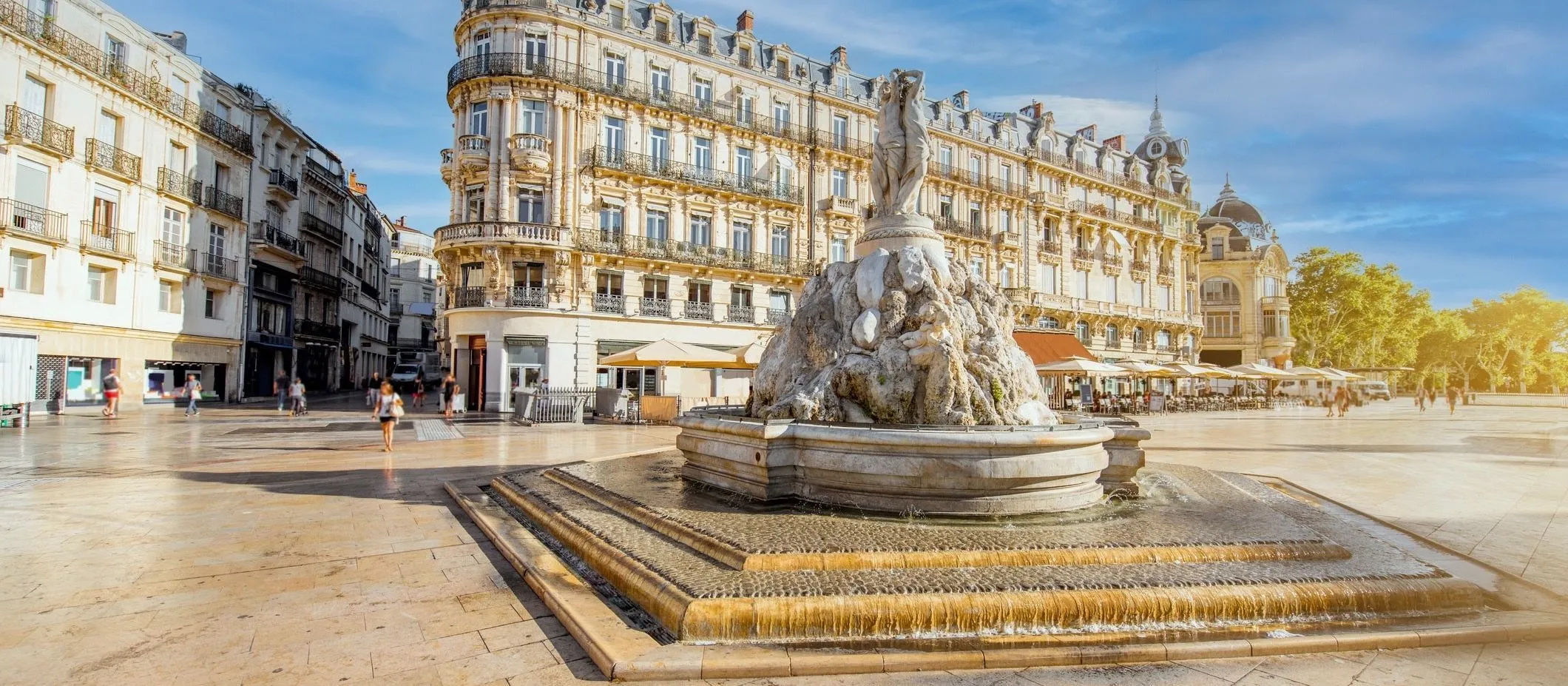

Montpellier, nestled in the sunny region of Occitanie in southern France, is a city renowned for its youthful vibe, historic charm, and Mediterranean allure. From its ancient roots as a medieval trading hub to its vibrant modern culture, Montpellier offers visitors a delightful blend of history, culture, and contemporary attractions. Here’s why Montpellier deserves its place as a top city to visit in France, along with some compelling reasons to explore this captivating destination.
1. Historical Heritage and Architectural Splendor
Montpellier boasts a rich history dating back to the Middle Ages, evident in its beautifully preserved architecture and historic landmarks. The Place de la Comédie, the city’s main square, is a bustling hub surrounded by elegant 19th-century buildings, cafes, and shops. Dominating the skyline is the Saint-Pierre Cathedral, a stunning example of Gothic architecture with its intricate facade and soaring spire. The Porte du Peyrou, a majestic triumphal arch, offers panoramic views of the city and the picturesque Château d’Eau water tower. Exploring Montpellier’s historic center, a maze of narrow streets and hidden courtyards, reveals a city steeped in architectural splendor and medieval charm.
2. Cultural Diversity and Vibrant Arts Scene
Montpellier is renowned for its cultural dynamism and artistic creativity. The city is home to the Opéra Comédie, where visitors can enjoy opera, ballet, and theatrical performances in a stunning neoclassical setting. The Musée Fabre, one of France’s largest art museums, houses an impressive collection of European paintings, sculptures, and decorative arts spanning several centuries. Montpellier’s vibrant street art scene adds a contemporary flair to its cultural landscape, with colorful murals and urban installations transforming the city’s walls into open-air galleries. The Pavillon Populaire showcases photography exhibitions, while the Festival de Radio France et Montpellier Occitanie celebrates classical music with concerts held in historic venues and outdoor settings.
3. Student Life and Academic Prestige
Montpellier is home to one of Europe’s oldest universities, the University of Montpellier, founded in 1289. The city’s lively student population contributes to its youthful atmosphere and vibrant social scene. The Place Royale du Peyrou, a sprawling park with majestic statues and a scenic promenade, is a popular gathering spot for students and locals alike. The university’s botanical garden, the Jardin des Plantes de Montpellier, offers a tranquil oasis with exotic plants, greenhouses, and themed gardens, providing a serene retreat in the heart of the city. Montpellier’s reputation as a center of learning and innovation enhances its cultural vitality and adds a dynamic energy to its streets and squares.
4. Mediterranean Climate and Outdoor Activities
Montpellier enjoys a Mediterranean climate with mild winters and hot summers, making it an ideal destination year-round for outdoor enthusiasts. The Promenade du Peyrou, a picturesque esplanade with sweeping views of the city and the Pic Saint-Loup mountain in the distance, is perfect for leisurely walks and picnics. The nearby beaches of Palavas-les-Flots and Carnon-Plage offer golden sands, clear blue waters, and a variety of water sports, from swimming and snorkeling to windsurfing and paddleboarding. Cycling along the Lez River or hiking in the Montpellier Massif provides opportunities to explore the region’s natural beauty and panoramic vistas, showcasing Montpellier’s outdoor lifestyle and scenic surroundings.
5. Gastronomic Delights and Culinary Traditions
Montpellier’s culinary scene reflects its Mediterranean heritage and gastronomic traditions. The city’s markets, such as the Marché des Halles Castellane and the Marché du Lez, offer fresh produce, cheeses, meats, and local delicacies that highlight the flavors of southern France. Visitors can sample regional specialties like brandade de morue (salt cod puree), tielle sétoise (seafood pie), and pélardon (local goat cheese) at traditional bouchons and gourmet restaurants. Montpellier’s lively cafes and wine bars, particularly around the Place Jean Jaurès and Place de la Canourgue, provide the perfect setting to savor local wines from nearby vineyards in the Languedoc-Roussillon region. Dining in Montpellier is a culinary journey through Provencal flavors and Mediterranean delights, enhancing the city’s appeal as a gastronomic destination.



